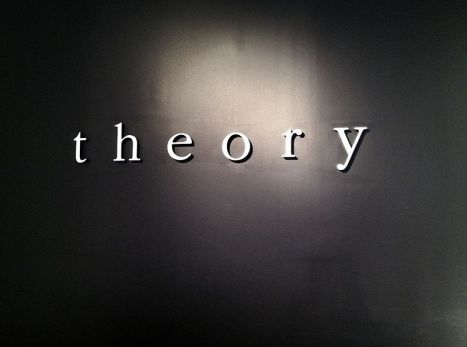There is a significant movement in higher education to move toward a model of openness, where courses are offered for free on platforms like Coursera, Udacity, and edX. The Massive Open Online Course (MOOC) hysteria has been widely published over the last year, however, Open Educational Resources have been in the public eye since the advent of MIT’s Open Courseware initiative which began in 2001 (Rolfe, 2012). The UNESCO definition for Open Educational Resources as stated in Clements and Pawlowski are “technology-enabled, open provision of educational resources for consultation, use and adaption by a community of users for noncommercial purposes’ (Clements, K. & Pawlowski, J., 2012).
Open Educational Resources are gaining attention as the Open Learning movement is underway. The largest challenges and barriers presented require innovative thinking in order to expand access to a global repository of learning assets that could transform higher education. Opening up access to materials that can be translated and repurposed internationally will help developing countries save on course content development, facilitate the sharing of knowledge, and address the digital divide by providing capacity-building resources for educators (Olcott, 2012). The barriers presented in this paper (Quality, Policies, Copyright, and Sustainability) are meant to pose challenges for the OER community to respond to in order to better serve our community of learners around the planet.
OER: Barriers to Overcome
1. Quality Evaluation/Peer Review process
High quality resources are in demand globally, however, in some content repositories there is no system of classification related to quality. Educators are willing to evaluate quality by ranking, recommending, or becoming accredited reviewers; user recommendations (peer reviews or rankings) from colleagues or friends would allow them to make selections of resources (Clements, Pawlowski, 2012).
A content repository that overcomes this barrier is MERLOT (Multimedia Educational Resource for Learning and Online Teaching); whereby peer reviewers can rate artifacts, which helps users in the selection of high quality resources (Swift, C. 2012).
The MERLOT evaluation criteria: http://taste.merlot.org/evaluationcriteria.html
The MERLOT rating system: http://taste.merlot.org/ratingsystem.html.
2. Policies (recognition for users/creators/remixers)
In order to properly incentivize participation, submission, and evaluation of OERs; faculty incentives (reward and recognition) are needed along with support staff to continue to build up OER repositories. (Nikoi, S. Armellini, A. 2012)
D’Antoni presents the lack of academic recognition of the development of OER by teaching staff as a barrier to adoption. However, she also points out that sharing knowledge is aligned with the tradition of the academy (D’Antoni, S. 2012). If career advancement for faculty does not include incentives for using OER it would be difficult to argue the case for OER (Olcott,D. 2012).
3. Legal (copyright)
Copyright is incompatible with sharing, creativity, and learner engagement and therefore the wrong tool for OERs, however, Creative Commons provides the needed legal tools to reserve rights, but open content in a variety of ways (Bissell, 2012).

Copyright is simply inflexible, creative commons offers the options required for educators to ensure their work is not closed. Creative commons is the infrastructural glue for the OER movement (Bissell, 2012).
Creative commons allows educators to place the permission on the artifact in advance, thus eliminating the time and expense associated with gaining copyright permissions to use copyrighted materials (D’Antoni, S, 2012).
OERs mentioned on the Creative Commons website:
http://wiki.creativecommons.org/Free_to_Learn_Guide/Index_of_OER_Resources
4. Sustainability
In Rolfe’s paper she mentions literature that points to the demise of 11 different content repositories in the present decade (Rolfe, 2012). The support and maintenance for the technology, the community, and the content can become expensive, however, even those with small budgets like Utah State University ($120,000) have had their funding pulled. It is conceivable that the lack of a revenue stream creates the issue with sustainability (Olcott, D. 2012).
Critical to the mission of open access, universities and their faculties must break down these barriers and build up the repositories of content understanding that it should be translated, repurposed and distributed internationally. The technology exists to deliver OERs on a global scale. The world needs one technology platform that aggregates all OERs, allows them to be translated easily, and empowers learners and educators globally with access. This OER digital content sharing will transform developing countries, democratizing education and empowering the knowledge economy.
References
Bissell, A. (2012). Permission granted: open licensing for educational resources. Open Learning: The Journal of Open, Distance and eLearning, 24(1), 97-106. doi: 10.1080/02680510802627886
Clements, K., & Pawlowski, J. (2011). User-oriented quality for OER: understanding teachers’ views on re-use, quality, and trust. Journal of Computer Assisted Learning, 2012(28), 4-14. doi: 10.1111/j.1365-2729.2011.00450.x
D’Antoni, S. (2009). Open educational resources: reviewing initiatives and issues. Open Learning: The Journal of Open, Distance and eLearning, 24(1), 3-10. doi: 10.1080/02680510802625443
Nikoi, S., & Armellini, A. (2012). The oer mix in higher education: purpose, process, product, and policy. Distance Education, 33(2), 165-184. doi: 10.1080/01587919.2012.697439
Olcott, D. (2012). OER perspectives: emerging issues for universities. Distance Education, 33(2), 283-290.
Rolfe, V. (2012). Open educational resources: staff attitudes and awareness. Research in Learning Technology, 20, doi: 10.3402/rlt.v20i0/14295
Swift, C. (2012, August). Be recognized as a merlot peer reviewer. http://taste.merlot.org/documents/PeerReviewer_12_13_000.pdf




